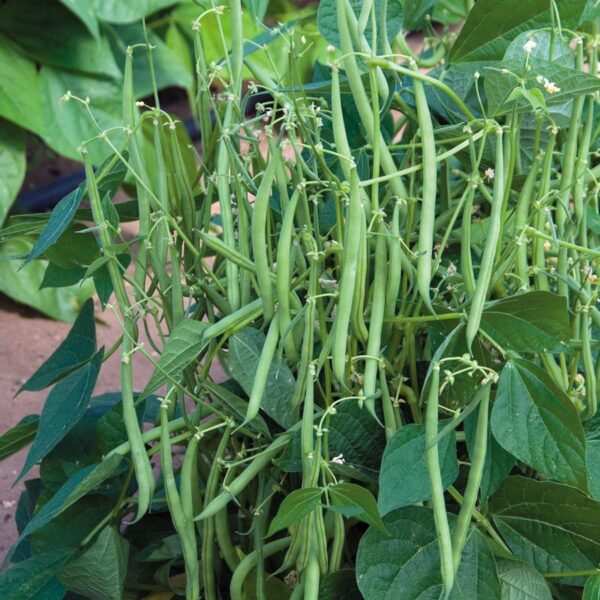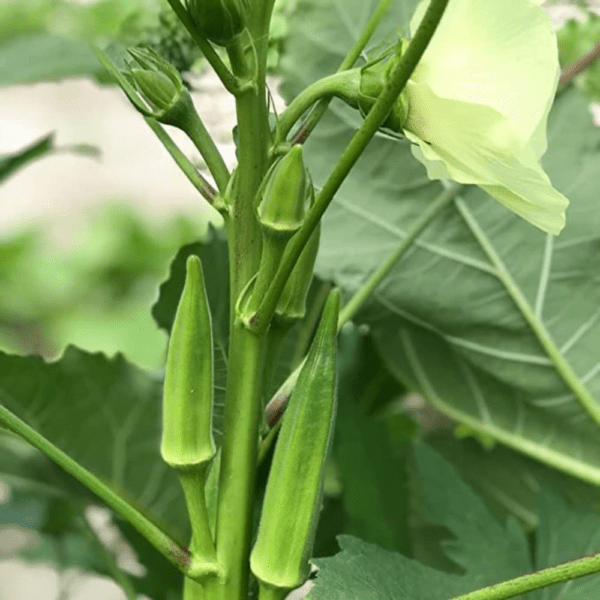Mizuna Red and Green Mixed seeds
Mizuna (Brassica rapa var. japonica) is a fast-growing, cool-season leafy green with a mild, slightly peppery flavor, often used in salads, stir-fries, and soups. It is a member of the mustard family and is highly nutritious, rich in vitamins and antioxidants. Growing mizuna greens organically from seeds is relatively easy, especially in temperate climates. Here’s a step-by-step guide on how to grow mizuna greens organically:
1. Choosing the Right Location
- Climate: Mizuna thrives in cool weather, with ideal temperatures ranging from 50°F to 65°F (10°C to 18°C). It can tolerate light frost, making it perfect for spring and fall plantings. It grows best in regions with mild winters and early spring or fall.
- Sunlight: Mizuna needs full sun or partial shade. In warmer climates, provide some afternoon shade to prevent the leaves from wilting or becoming too bitter.
- 6 hours of sunlight per day is ideal, though it can tolerate some shade during hotter weather.
2. Soil Preparation
- Soil Type: Mizuna prefers well-draining, fertile, and loose soil. A loamy or sandy loam soil is ideal, as it allows for good root growth and prevents waterlogging.
- Soil pH: Mizuna grows best in slightly acidic to neutral soil, with a pH range of 6.0 to 7.0.
- Soil Fertility: Organic matter like compost or well-rotted manure should be incorporated into the soil before planting to improve fertility and structure.
- Soil Drainage: Ensure that the soil is well-drained to avoid waterlogging. Mizuna does not like sitting in soggy soil, which can cause root rot and other fungal issues.
3. Sowing Mizuna Seeds
- Direct Sowing: Mizuna is typically grown from direct seed sowing.
- When to Sow: In cooler climates, sow early spring or late summer/early fall. Mizuna is a cool-season crop and can be sown as early as 3-4 weeks before the last expected frost in spring.
- Seed Depth: Sow the Mizuna Red and Green Mixed seeds 1/4 to 1/2 inch (0.6 to 1.2 cm) deep into the soil.
- Spacing: Space Mizuna Red and Green Mixed seeds about 1 inch (2.5 cm) apart in rows. After the Mizuna Red and Green Mixed seeds germinate, thin the seedlings to about 6-8 inches (15-20 cm) apart to give them enough space to grow.
- Row Spacing: If planting in rows, space the rows about 12-18 inches (30-45 cm) apart to provide adequate room for growth.
4. Germination and Care
- Germination Time: Mizuna Red and Green Mixed seeds typically germinate within 4-7 days if the soil temperature is 60°F to 70°F (15°C to 21°C).
- Watering: Keep the soil moist but not waterlogged during the germination period. Mizuna seeds need consistent moisture for successful germination. Once the seeds have sprouted, water regularly, but reduce watering slightly to avoid excessive moisture.
- Water deeply when needed, but ensure the top layer of the soil dries out between waterings.
- Thinning: Once seedlings have emerged, thin them to allow enough space for healthy growth. Leave about 6-8 inches (15-20 cm) between each plant. The thinned-out seedlings can be used in salads or stir-fries.
5. Organic Fertilization
- Compost: Mizuna benefits from the addition of compost before planting and throughout its growing season. Incorporating well-rotted manure or organic compost improves soil fertility, providing essential nutrients.
- Organic Fertilizers: Apply a balanced organic fertilizer like fish emulsion, compost tea, or seaweed extractevery 2-3 weeks to promote healthy growth. Mizuna tends to grow fast, so providing a steady supply of nutrients is important for producing lush, flavorful greens.
- Nitrogen-Rich Fertilizer: Since Mizuna is a leafy green, it will benefit from a nitrogen-rich fertilizer to encourage vigorous leaf production.
6. Weeding and Mulching
- Weeding: Keep the bed free of weeds, especially when the plants are young. Weeds compete with Mizuna for nutrients and water. Hand weed carefully to avoid damaging the roots.
- Mulching: Apply a layer of organic mulch (like straw, grass clippings, or shredded leaves) around the plants to suppress weeds, retain moisture, and keep the soil temperature stable. Mulch also helps prevent soil erosion and keeps the roots cool.
7. Pest and Disease Management
- Common Pests: While Mizuna is generally pest-resistant, some common pests include aphids, cabbage worms, and flea beetles.
- Neem Oil: Use neem oil or insecticidal soap to control aphids and other soft-bodied insects. You can also introduce natural predators like ladybugs or lacewings to control aphids organically.
- Diatomaceous Earth: Apply diatomaceous earth around the plants to control crawling pests like slugs and snails.
- Diseases: Mizuna is susceptible to fungal diseases like downy mildew and powdery mildew, particularly in humid conditions.
- Preventive Measures: Space plants well apart to improve air circulation, and avoid overhead watering. If mildew appears, treat with neem oil or a baking soda solution (1 tablespoon of baking soda in 1 gallon of water).
- Ensure proper drainage to prevent root rot and other water-related issues.
8. Harvesting Mizuna Greens
- Young Leaves: Mizuna can be harvested 3-4 weeks after sowing, depending on growing conditions. The leaves are tender and flavorful when young. You can harvest the outer leaves first, leaving the inner ones to continue growing. This method will allow the plant to produce new leaves for several weeks.
- Cut-and-Come-Again: Mizuna is a cut-and-come-again crop, meaning you can continuously harvest the leaves over the growing season by cutting the outer leaves. Ensure to leave a few leaves at the center of the plant so it continues growing.
- Mature Plant: If you wish to allow the plant to grow to full maturity, it will flower and set seeds in about 60-75 days after sowing. You can harvest seeds once the flowers dry and the seed pods turn brown.
9. Storage and Preservation
- Fresh Leaves: Mizuna greens are best used fresh. Store the harvested leaves in the refrigerator for up to 3-4 days. Wrap them in a damp paper towel and place them in a sealed plastic bag to keep them fresh.
- Freezing: To preserve the greens for longer storage, blanch them in boiling water for about 2 minutes, then plunge them into ice water to stop the cooking process. After draining, store the leaves in freezer bags for up to 6 months.
- Seed Storage: If you’re saving seeds, let the seed pods dry fully before harvesting. Store the seeds in a cool, dry place in an airtight container.
10. Troubleshooting
- Slow Growth: If Mizuna is growing slowly or is not producing many leaves, it might be lacking sufficient nitrogen. Apply a nitrogen-rich organic fertilizer to boost leaf growth.
- Yellowing Leaves: This could indicate a nutrient deficiency (especially nitrogen), overwatering, or poor drainage. Check the soil conditions and fertilize if necessary.
Conclusion
Mizuna is an easy-to-grow, fast-growing leafy green that thrives in cooler temperatures and is perfect for organic gardening. By following organic growing practices such as sowing in well-drained, fertile soil, providing adequate space, and using natural pest management techniques, you can enjoy a bountiful harvest of fresh Mizuna greens throughout the growing season. Whether you’re growing it for salads, stir-fries, or garnishes, Mizuna is a healthy, flavorful, and versatile addition to your organic garden.
| Weight | 20 g |
|---|---|
| Dimensions | 11 × 8.5 × 11 cm |






